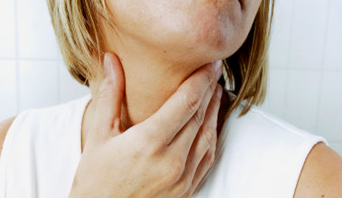By Nanci Hellmich, USA TODAY
Many celebrities, including Miley Cyrus and Gwyneth Paltrow, have talked about a gluten-free diet.
Perhaps with a boost from such celebrities as Miley Cyrus and Gwyneth Paltrow, the number of Americans showing interest in a gluten-free diet has reached new heights.
Almost a third of adults (29%) in the USA say they want to cut down on the gluten they eat or consume a gluten-free diet, according to new data from the NPD Group, a market research firm. The latest finding is based on interviews with 1,000 adults during the last week of January. Gluten is a protein found in wheat, rye and barley.
That’s the highest percentage since the company began asking the question in 2009.
Some people want to go on a gluten-free diet to lose weight because they’ve heard that’s what celebrities are doing, says Andrea Levario, executive director for the American Celiac Disease Alliance. “What people don’t realize is that many gluten-free products are higher in fat than other products, and people may not lose weight but actually gain weight eating them.”
She says about 1% of the population suffers from celiac disease, which triggers an immune system reaction that causes inflammation in the small intestine when a person eats food containing gluten. Common signs and symptoms of the disease may include diarrhea, iron-deficiency anemia, lactose intolerance, fatigue, joint pain, abdominal pain, migraines, depression, short stature and osteoporosis, Levario says.
“For people with celiac disease, the gluten-free diet is medically prescribed. It is the only course of treatment for this life-long chronic condition. It isn’t a choice; it is a matter of life and death.”
One big problem for people with celiac disease: There’s no standard for gluten-free labeling on products in the USA, she says. “We are looking forward to the administration finalizing one in the near future.”
Some people may have a similar condition called gluten intolerance or non-celiac gluten sensitivity, Levario says. They don’t test positive for celiac disease, yet they have symptoms similar to those in people who have the disease, she says. While celiac disease, wheat allergy, and gluten-intolerance may be treated with similar diets, they are not the same condition, she says.
“Clearly more people are interested in a gluten-free diet than really need it,” says Harry Balzer, NPD’s chief industry analyst.
He thinks the trend is about people’s interest in health and wellness, possibly more than weight loss. “This is the health issue of the day, based on the increase in the number of Americans interested in this subject.”
In practical terms, Balzer says, other NPD data show people are still eating a lot of sandwiches so they’re not skipping bread completely, but they are less likely to have bread with a meal. And when it comes to restaurant meals they are ordering more gluten-free or wheat-free menu items than they were several years ago, NPD found.
Registered dietitian Judi Adams, president of the Wheat Foods Council, says, “we respect all those people who have to go gluten-free, including people with celiac disease or non-celiac gluten sensitivity and some people who have irritable bowel syndrome.
“But the people who are using it as a cleansing diet or calorie-controlled diet are using it as a fad diet, and as we all know fad diets do not work longterm,” she says. “People often gain weight when they go on a gluten-free diet, particularly if they substitute products that are higher in calories, fat and sugar.”
Fiber is just one of the main nutrients people miss out on if they eliminate all grains, she says.
Source: http://www.usatoday.com/story/news/nation/2013/03/05/gluten-free-diet-popularity/1963715/
 Celiac Disease: Basics & Beyond will cover the basics of celiac disease including pathophysiology, diagnosis, and treatment. This 2-hour online CEU course will then go beyond the basics by describing how registered dietitians use the nutrition care process to provide medical nutrition therapy to patients with celiac disease. Two case studies are included to assist the health professional in understanding the patient’s perspective from pre-diagnosis to disease management. This course will be informative for anyone with celiac disease as well as registered dietitians and other health professionals who work with patients with celiac disease. Course #20-76 | 2013 | 26 pages | 17 posttest questions
Celiac Disease: Basics & Beyond will cover the basics of celiac disease including pathophysiology, diagnosis, and treatment. This 2-hour online CEU course will then go beyond the basics by describing how registered dietitians use the nutrition care process to provide medical nutrition therapy to patients with celiac disease. Two case studies are included to assist the health professional in understanding the patient’s perspective from pre-diagnosis to disease management. This course will be informative for anyone with celiac disease as well as registered dietitians and other health professionals who work with patients with celiac disease. Course #20-76 | 2013 | 26 pages | 17 posttest questions
Professional Development Resources is approved by the American Psychological Association (APA) to sponsor continuing education for psychologists; by the National Board of Certified Counselors (NBCC) to offer home study continuing education for NCCs (Provider #5590); by the Association of Social Work Boards (ASWB Provider #1046, ACE Program); by the National Association of Alcoholism & Drug Abuse Counselors (NAADAC Provider #000279); by the American Occupational Therapy Association (AOTA Provider #3159); by the Commission on Dietetic Registration (CDR Provider #PR001); and by various state licensing boards. Click here to view all accreditations.





